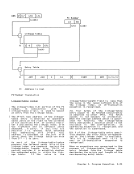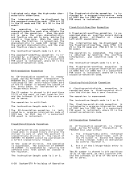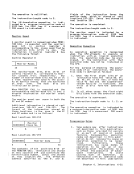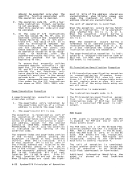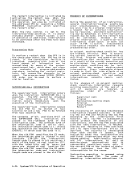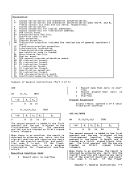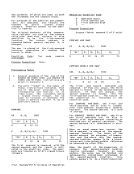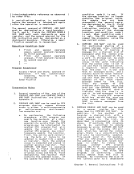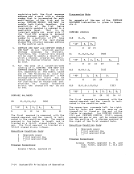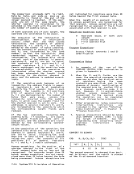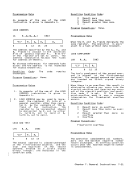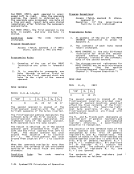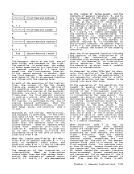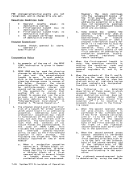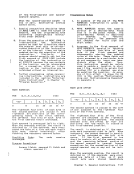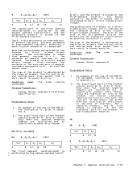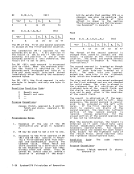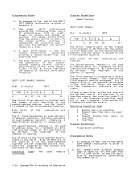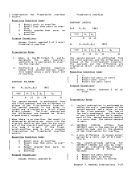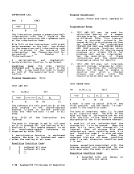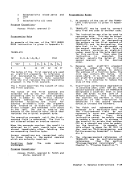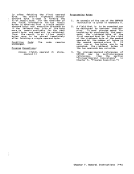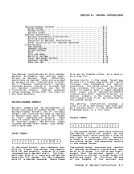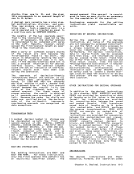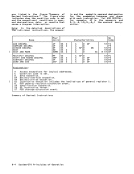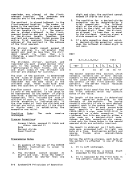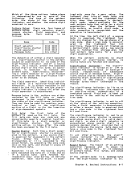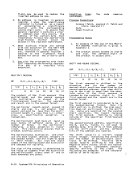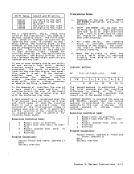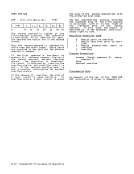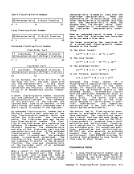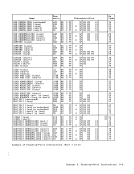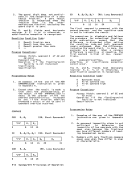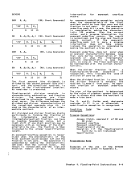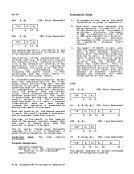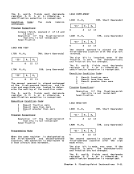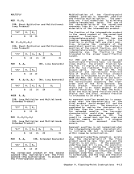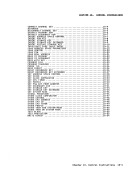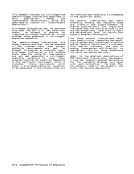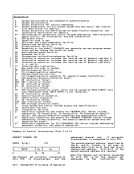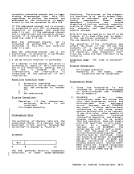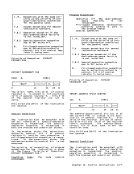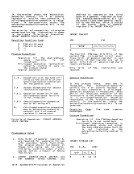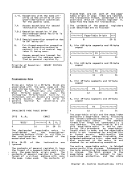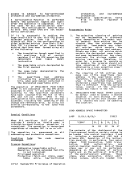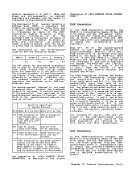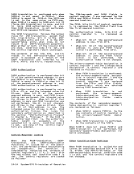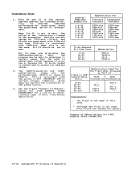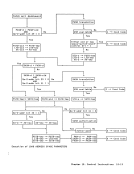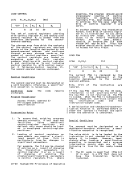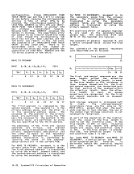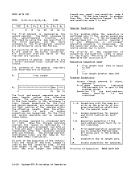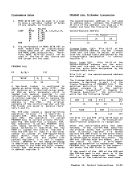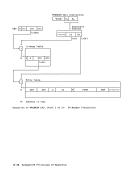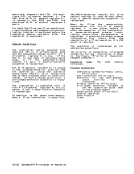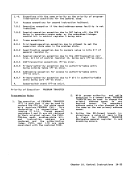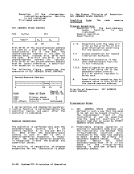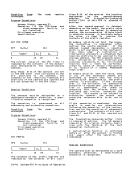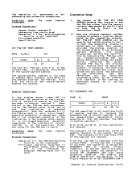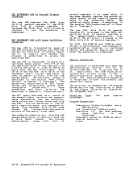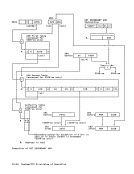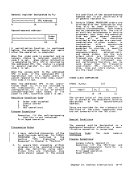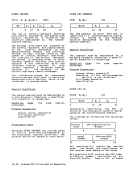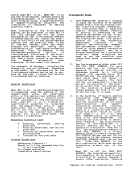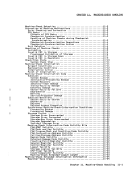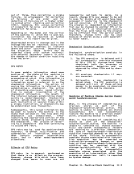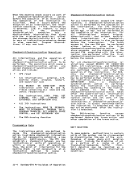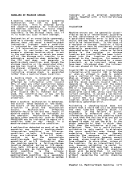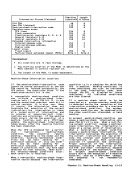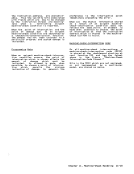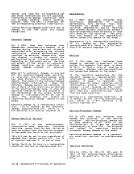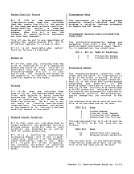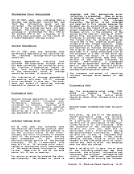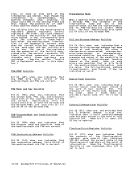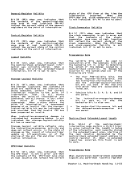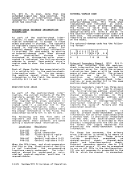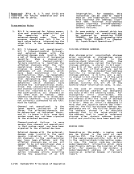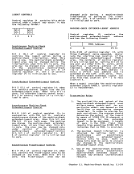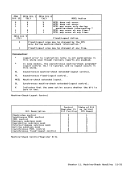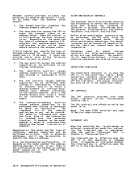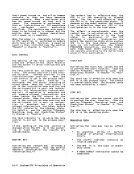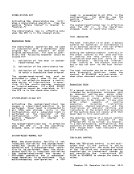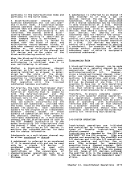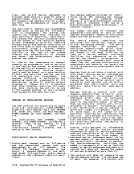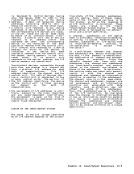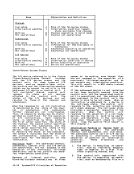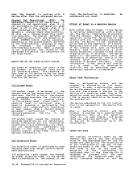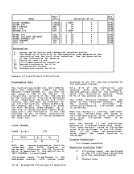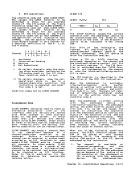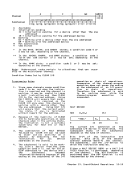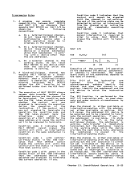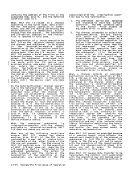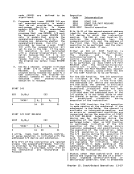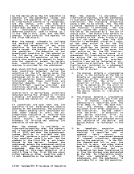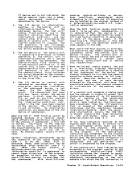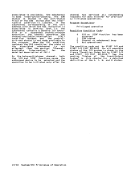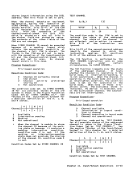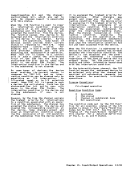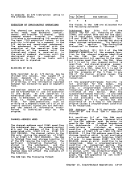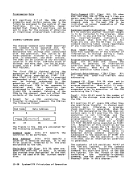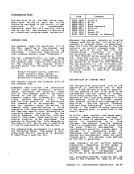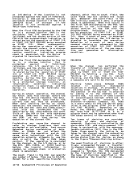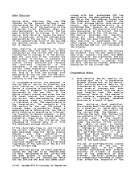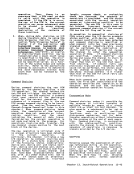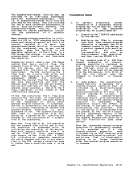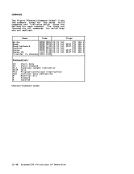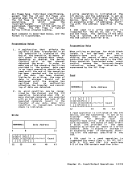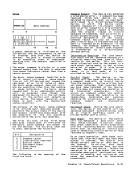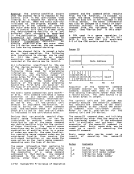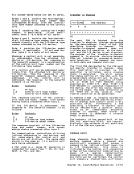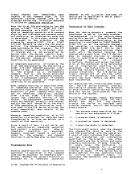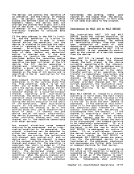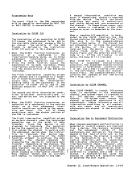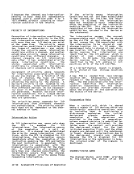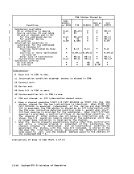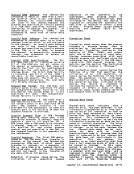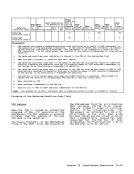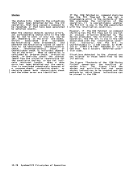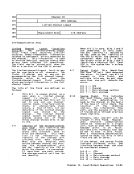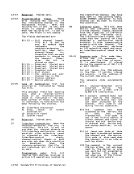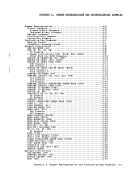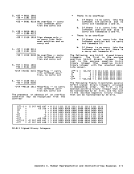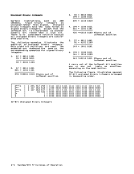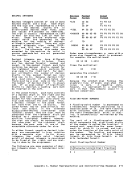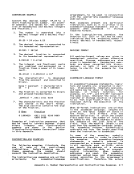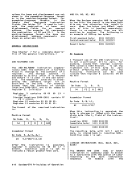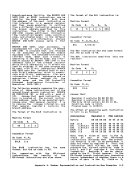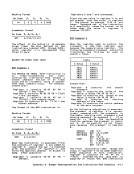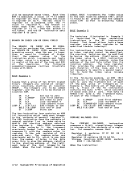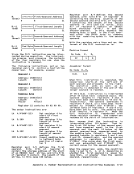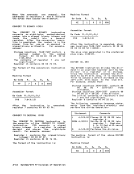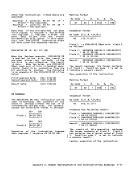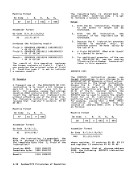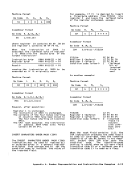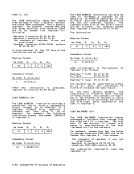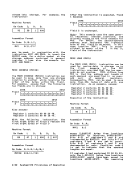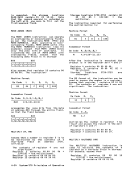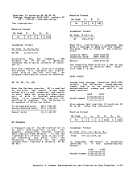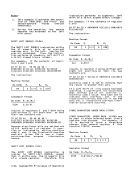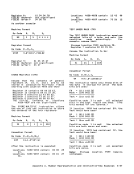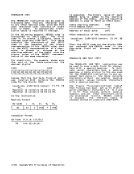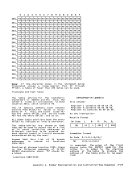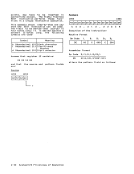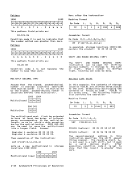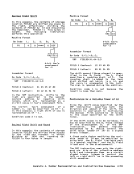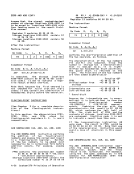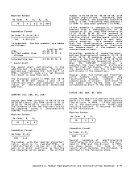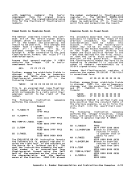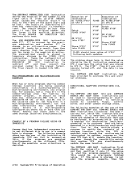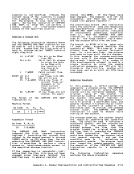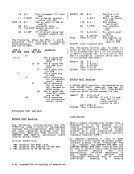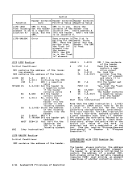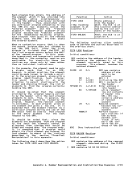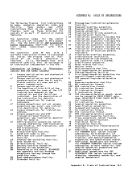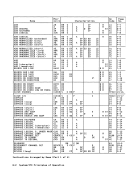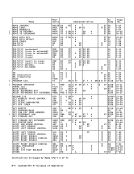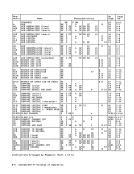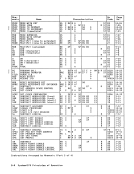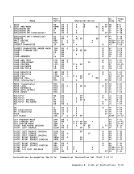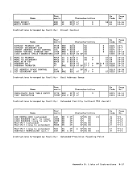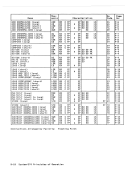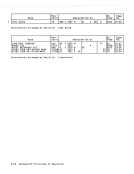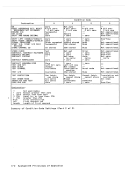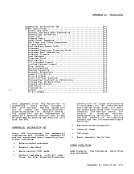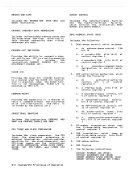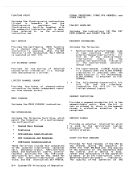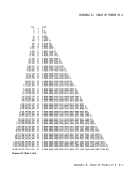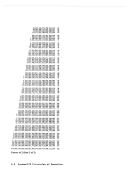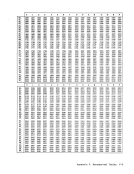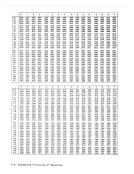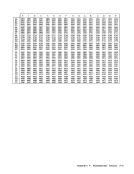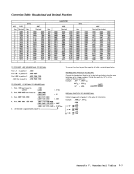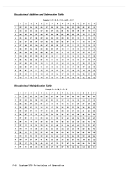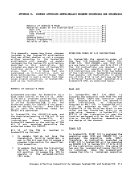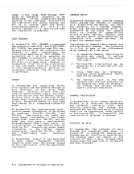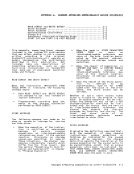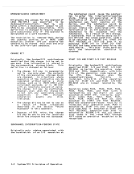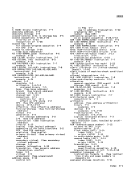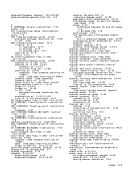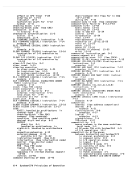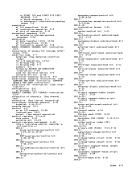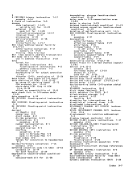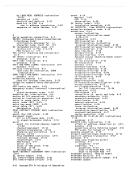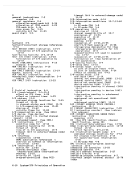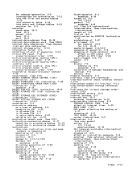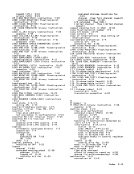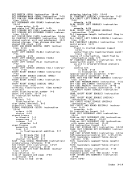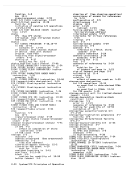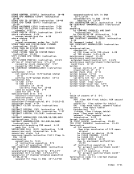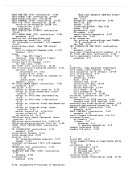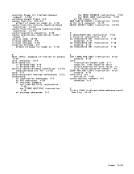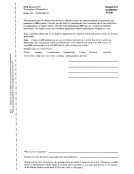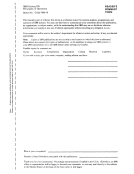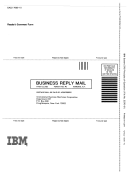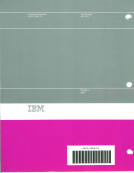entry is described as attached, the term
"to aCPU" is implied.
The usable state of a TLB entry denotes
that theCPU can attempt to use the TLB
entry for implicit address translation.
Also, the usable state of a TLB
segment-table entryis a factor in
determining whether a page-table entry
is attached.
A segment-table entry or a page-table
entry may be placedin the TLB only when
the entry is attached and valid and
would not cause a translation
specification exception if used for
translation. Except for these
restrictions, the entry may be placedin the TLB at any time. A segment-table entry is attached when
all of the following conditions are met:
1. The currentPSW specifies DAT on.
2. The currentPSW contains no errors
which would cause an early exception to be recognized. Those
machines withoutDAS installed do
not necessarily comply withthis condition.
3. The current translation format,
bits 8-12 in control register0, is
valid.
4. The entry meets the requirements in
a or b below.
a. The entry is within the segment
table designated by the prlmary
segment-table designation in
control register 1.
b. The entry is within the segment
table designated by the second
ary segment-table designation
in control register 7 and
either of the following
requirements is met:
•
•
TheCPU is in the
secondary-space mode.
The secondary-space con
trol, bi t 5 of control
register0, is one.
5. The entry can be selected by the
segment-index portion of a virtual
address.
A page-table entry is attached when it
is within the page table designated by
either a usable TLB segment-table entry
or by an attached and valid segment
table entry which would not cause a
translation-specification exception if
used for translation.
A TLB segment-table entry is in the
usable state when all of the following
conditions are met:
1 .
2.
3.
4.
The currentPSW specifies DAT on.
The currentPSW contains no errors
which would cause an early excep
tion to be recognized. Those
machines without DAS installed do
not necessarily comply with this
condition.
The translation-format field in the
TLB segment-table entry is the same
as the current translation format.
The TLB segment-table entry meets
at least one of the following re
quirements:
• The common-segment bit is one
in the TLB entry.
• The segment-table-origin fieldin the TLB entry is the same as
the current PSTO.
• The segment-table-origin field
in the TlB entry is the same as
the currentSSTO, and either PSW bit 16 is one or bit 5 of
control register0 is one.
A TLB segment-table entry may be used
for implicit address translation only
when the entry is in the usable state,
the segment index of the entry matches
the segment index of the virtual address
to be translated, andeither the
common-segment bit is onein the TLB
entry or the segment-table-origin field
in the TLB entry matches the segment
table origin used to select it.
A TlB page-table entry
state when all of the
tions are met:
is in the usable
following condi-
1 . The TLB page-table entryis selected by a usable TlB segment
table entry or by an attached and
valid segment-table entry which
would not cause a translation
specification exceptionif used for
translation .
2. The page-table-origin field in the
TlB page-table entry matches the
page-table-origin field in the
segment-table entry which selects
it.
3. The page-index field in the TlB
page-table entry is within the
range permitted by the page-table
length field in the segment-table
entry which selects it.
4. The translation-format field in the
TlB page-table entry is the same as
the current translation format.
A TlB page-table entry may be used for
implicit address translation only when
the TlB entry is in the usable state as
selected by the segment-table entry
being used and only when the page indexChapter 3. Storage 3-33
"to a
The usable state of a TLB entry denotes
that the
entry for implicit address translation.
Also, the usable state of a TLB
segment-table entry
determining whether a page-table entry
is attached.
A segment-table entry or a page-table
entry may be placed
the entry is attached and valid and
would not cause a translation
specification exception if used for
translation. Except for these
restrictions, the entry may be placed
all of the following conditions are met:
1. The current
2. The current
which would cause an early excep
machines without
not necessarily comply with
3. The current translation format,
bits 8-12 in control register
valid.
4. The entry meets the requirements in
a or b below.
a. The entry is within the segment
table designated by the prlmary
segment-table designation in
control register 1.
b. The entry is within the segment
table designated by the second
ary segment-table designation
in control register 7 and
either of the following
requirements is met:
•
•
The
secondary-space mode.
The secondary-space con
trol, bi t 5 of control
register
5. The entry can be selected by the
segment-index portion of a virtual
address.
A page-table entry is attached when it
is within the page table designated by
either a usable TLB segment-table entry
or by an attached and valid segment
table entry which would not cause a
translation-specification exception if
used for translation.
A TLB segment-table entry is in the
usable state when all of the following
conditions are met:
1 .
2.
3.
4.
The current
The current
which would cause an early excep
tion to be recognized. Those
machines without DAS installed do
not necessarily comply with this
condition.
The translation-format field in the
TLB segment-table entry is the same
as the current translation format.
The TLB segment-table entry meets
at least one of the following re
quirements:
• The common-segment bit is one
in the TLB entry.
• The segment-table-origin field
the current PSTO.
• The segment-table-origin field
in the TlB entry is the same as
the current
control register
A TLB segment-table entry may be used
for implicit address translation only
when the entry is in the usable state,
the segment index of the entry matches
the segment index of the virtual address
to be translated, and
common-segment bit is one
entry or the segment-table-origin field
in the TLB entry matches the segment
table origin used to select it.
A TlB page-table entry
state when all of the
tions are met:
is in the usable
following condi-
1 . The TLB page-table entry
table entry or by an attached and
valid segment-table entry which
would not cause a translation
specification exception
translation .
2. The page-table-origin field in the
TlB page-table entry matches the
page-table-origin field in the
segment-table entry which selects
it.
3. The page-index field in the TlB
page-table entry is within the
range permitted by the page-table
length field in the segment-table
entry which selects it.
4. The translation-format field in the
TlB page-table entry is the same as
the current translation format.
A TlB page-table entry may be used for
implicit address translation only when
the TlB entry is in the usable state as
selected by the segment-table entry
being used and only when the page index













































































































































